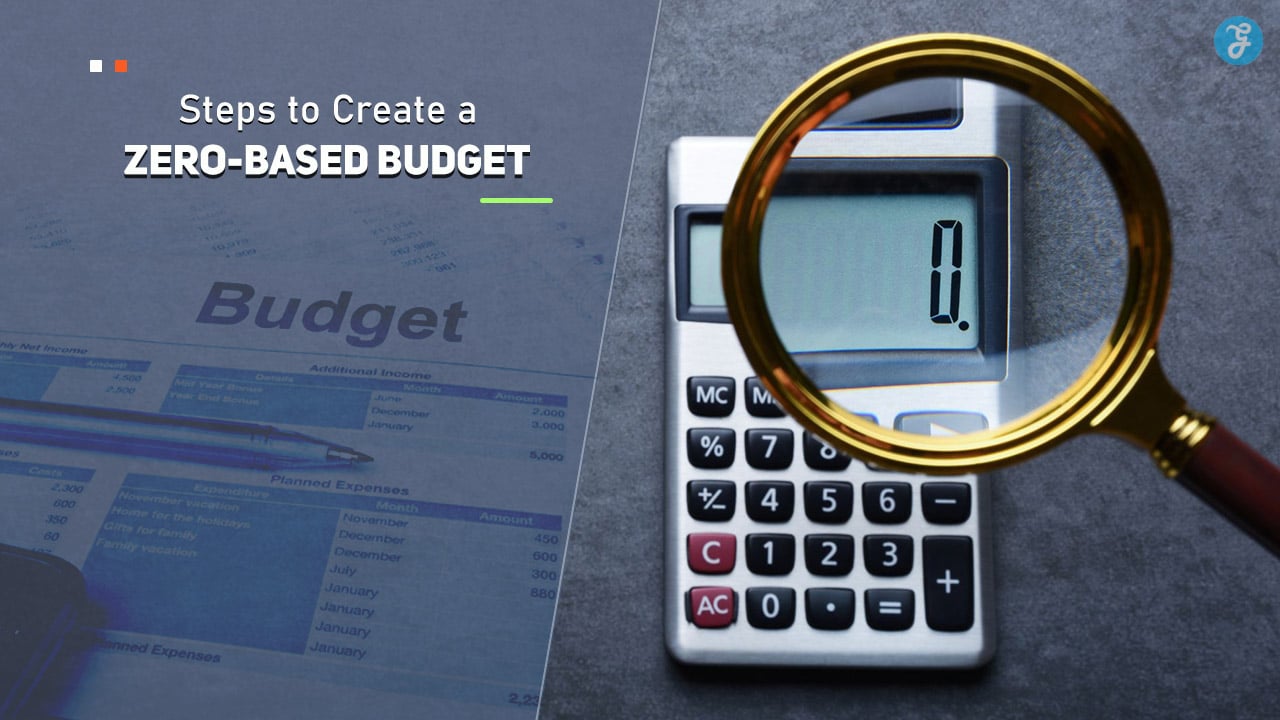Creating and sticking to a budget is one of the most effective ways to achieve financial stability. Among the many budgeting methods, the zero-based budget stands out for its simplicity and effectiveness.
This budgeting approach ensures every dollar you earn has a purpose, whether it’s being spent, saved, or invested. By the end of each budgeting period, your income minus your expenses equals zero.
If you’ve struggled to save money, overspent in certain categories, or felt like your finances were out of control, a zero-based budget can help you regain financial clarity. This guide breaks down six practical steps to create a zero-based budget that works for you.
What Is a Zero-Based Budget?
A zero-based budget is a financial planning method where every dollar of your income is allocated to a specific purpose. Unlike other budgeting techniques that might leave some income unaccounted for, a zero-based budget ensures your income minus expenses equals zero.
This doesn’t mean you spend every penny you earn—it means every penny has a job, whether it’s going toward bills, savings, investments, or debt repayment.
Benefits of Zero-Based Budgeting
- Clear Financial Picture: Understand exactly where your money goes.
- Enhanced Control: Helps curb unnecessary spending by making every expense intentional.
- Flexibility: Adjust categories to reflect changing financial priorities.
- Improved Savings: Encourages saving and debt repayment as priorities.
Now, let’s dive into the six steps to create your zero-based budget.
1. Calculate Your Total Income
The foundation of a zero-based budget begins with knowing exactly how much money you have to work with. This includes all sources of income, not just your regular salary.
How to Calculate Your Income
- Regular Income: Note your monthly salary after taxes. If your income is variable, use an average based on the past six months.
- Additional Income Sources: Include side hustles, freelance gigs, rental income, or any other cash inflows.
- Unexpected Earnings: Be prepared to account for bonuses, refunds, or irregular payments.
Pro Tip
Use online tools or a simple spreadsheet to consolidate your income streams for a clear overview.
2. List All Your Expenses
To allocate your income effectively, you need a comprehensive understanding of your spending habits. Listing your expenses gives you a realistic view of where your money goes.
How to Categorize Expenses
- Fixed Expenses: Include rent/mortgage, insurance premiums, utility bills, and loan payments. These are consistent each month.
- Variable Expenses: Account for groceries, transportation, dining out, and entertainment. These can fluctuate monthly.
- Savings and Investments: Dedicate a portion of your income to emergency funds, retirement accounts, or investment portfolios.
- Debt Repayment: Prioritize high-interest debts to minimize financial strain over time.
Pro Tip
Review bank statements or budgeting apps to ensure you capture all expenses, even small or irregular ones.
3. Assign Every Dollar a Job
The essence of zero-based budgeting lies in ensuring every dollar has a purpose. By assigning your income to specific categories, you create a structured plan for your finances.
How to Allocate Your Income
- Essential Expenses First: Cover necessities like housing, utilities, and food.
- Set Financial Goals: Allocate money toward savings, debt repayment, or long-term investments.
- Discretionary Spending: Assign reasonable amounts to leisure, hobbies, and entertainment.
- Adjust Balances: Shift funds between categories as priorities change, but ensure the total always equals your income.
Pro Tip
Use the “50/30/20 Rule” as a guideline: 50% for needs, 30% for wants, and 20% for savings and debt repayment.
4. Track Your Spending Throughout the Month
Even the best budget is useless if you don’t stick to it. Tracking your spending helps ensure you’re staying within the limits you’ve set for each category.
How to Track Effectively
- Use Budgeting Apps: Apps like YNAB (You Need a Budget), Mint, or EveryDollar are designed to track expenses in real-time.
- Manually Record Transactions: Keep a spending journal or update your spreadsheet daily.
- Automate Payments: Schedule recurring bills and savings contributions to avoid missing deadlines.
Pro Tip
Set weekly check-ins to review your progress and make adjustments if needed.
5. Adjust and Reallocate Funds as Needed
Life is unpredictable, and your financial needs might change throughout the month. Being adaptable ensures you can handle unexpected expenses without derailing your budget.
How to Adjust Your Budget
- Shift Between Categories: If you overspend in one area, reallocate funds from less critical categories.
- Build an Emergency Buffer: Set aside a small amount each month to cover unforeseen expenses.
- Review Priorities: Regularly assess whether your allocations align with your goals and values.
Pro Tip
Treat budget adjustments as a normal part of the process, not a failure.
6. Evaluate and Refine Your Budget Regularly
Your budget isn’t set in stone. Regular evaluations help you identify patterns, eliminate inefficiencies, and refine your financial plan to meet your evolving goals.
How to Conduct a Review
- Monthly Reviews: At the end of each month, compare your actual spending to your budgeted amounts.
- Identify Trends: Look for areas where you consistently overspend or underspend.
- Set New Goals: Adjust your budget to reflect changes in income, expenses, or financial priorities.
Pro Tip
Celebrate small wins, like meeting savings goals or reducing unnecessary expenses, to stay motivated.
Common Challenges and How to Overcome Them
1. Overspending in Certain Categories
Solution: Use cash envelopes for discretionary spending or set stricter limits.
2. Irregular Income
Solution: Budget conservatively by using the lowest expected income as your baseline.
3. Lack of Motivation
Solution: Regularly revisit your financial goals to stay focused on the bigger picture.
Conclusion
Creating a zero-based budget might seem intimidating at first, but it’s one of the most effective ways to control your finances.
By calculating your income, listing expenses, assigning every dollar a job, and consistently tracking your spending, you can make informed decisions and achieve your financial goals.
Remember, the key to success lies in consistency and adaptability. With these six steps, you can create a zero-based budget that not only works for your current situation but also sets you on the path to long-term financial stability.








































